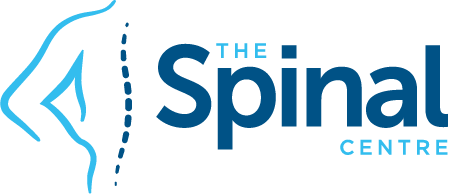
Association between Cervical Lordotic Curvature and Cervical Muscle cross‐sectional area in patients with Loss of Cervical Lordosis
PUBLISHED: Clin Anat. 2018 Jul;31(5):710-715. doi: 10.1002/ca.23074. Epub 2018 Apr 14. Pub Med: https://www.ncbi.nlm.nih.gov/pubmed/29575212
AUTHORS: Yoon SY1, Moon HI1, Lee SC2, Eun NL3, Kim YW2.
- Department of Rehabilitation Medicine, Bundang Jesaeng General Hospital, Gyeonggi-do, Republic of Korea.
- Department and Research Institute of Rehabilitation Medicine, Yonsei University College of Medicine, Seoul, Republic of Korea.
- Department of Radiology and Research Institute of Radiological Science, Gangnam Severance Hospital, Yonsei University College of Medicine, Seoul, Republic of Korea.
BACKGROUND: Disruption of the cervical lordotic curve can cause undesirable symptoms such as neck pain, and cord compression.
The purpose of this study was to investigate the biomechanics of loss of cervical lordosis by measuring the cross-sectional area (CSA) of the cervical muscles using magnetic resonance imaging (MRI), and to determine the relationship between cervical lordosis angle and cervical muscle status.
The cervical lordosis angle was measured on standing lateral plain radiography using the posterior tangent technique in patients who complained of neck pain. The CSAs of the cervical flexor muscles including the longus cervicis and longus capitis, the cervical extensor muscles including the splenius capitis and semispinalis capitis, and the sternocleidomastoid muscle, were measured at the maximum levels by axial T1-weighted MRI.
We compared neck muscle CSAs between the two groups, the correlation with cervical lordosis angle, and muscle status including CSA and imbalance.
RESULTS: The CSA of the semispinalis capitis was significantly lower in the loss of cervical lordosis group, and the ratio of cervical flexor to extensor was significantly different between the two groups (P < 0.05).
Partial correlation analysis revealed that the cervical lordotic angle was significantly positively correlated with the ratio of flexor to extensor muscle CSAs (P < 0.05).
CONCLUSION: There is a significant relationship between cervical muscle imbalance, including extensor muscle weakness, and loss of cervical lordosis.
An exercise program focusing on cervical extensor muscle strengthening and restoring the balance of flexor and extensor muscles is recommended for patients with loss of cervical lordosis.
Spinal Centre Note: Muscular strengthening needs to be combined with structural correction of the cervical lordosis to obtain the best outcome.
The Spinal Centre – Neuro-Musculoskeletal SolutionsThe Spinal Centre provides the Best Natural Medicines, Health Products and Nutritional Solutions to Free You of Pain and Improve Your Spinal Health.The Spinal Centre is a leader in the management and treatment of spinal pain and disability including:
- Chronic Back and Neck Pain
- Cervical and Lumbar Disc Injuries with or without neruological changes
- All forms of arthritis including rheumatoid arthritis, psoriatic arthritis and osteoarthritis
- Neurodegenerative diseases such as Parkinson’s and Alzheimer’s disease
- Neuromuscular problems such as chronic back pain, headaches, migraines, neck or spinal pains
- Myofascial pain syndromes such as fibromyalgia, diffuse muscular or joint pains
- Austistic spectrum disorders including ADD, ADHD, learning difficulties and autism
- Fatigue, energy and mood disorders including chronic fatigue and depression
The Spinal Centre focuses on resolution with the development of individualised treatment programs using Conservative and Integrative Medicine; combining genetic, metabolic and nutritional testing with specific natural medicines to enhance your health and achieve your genetic potential.We have helped thousands – Why Not You?





